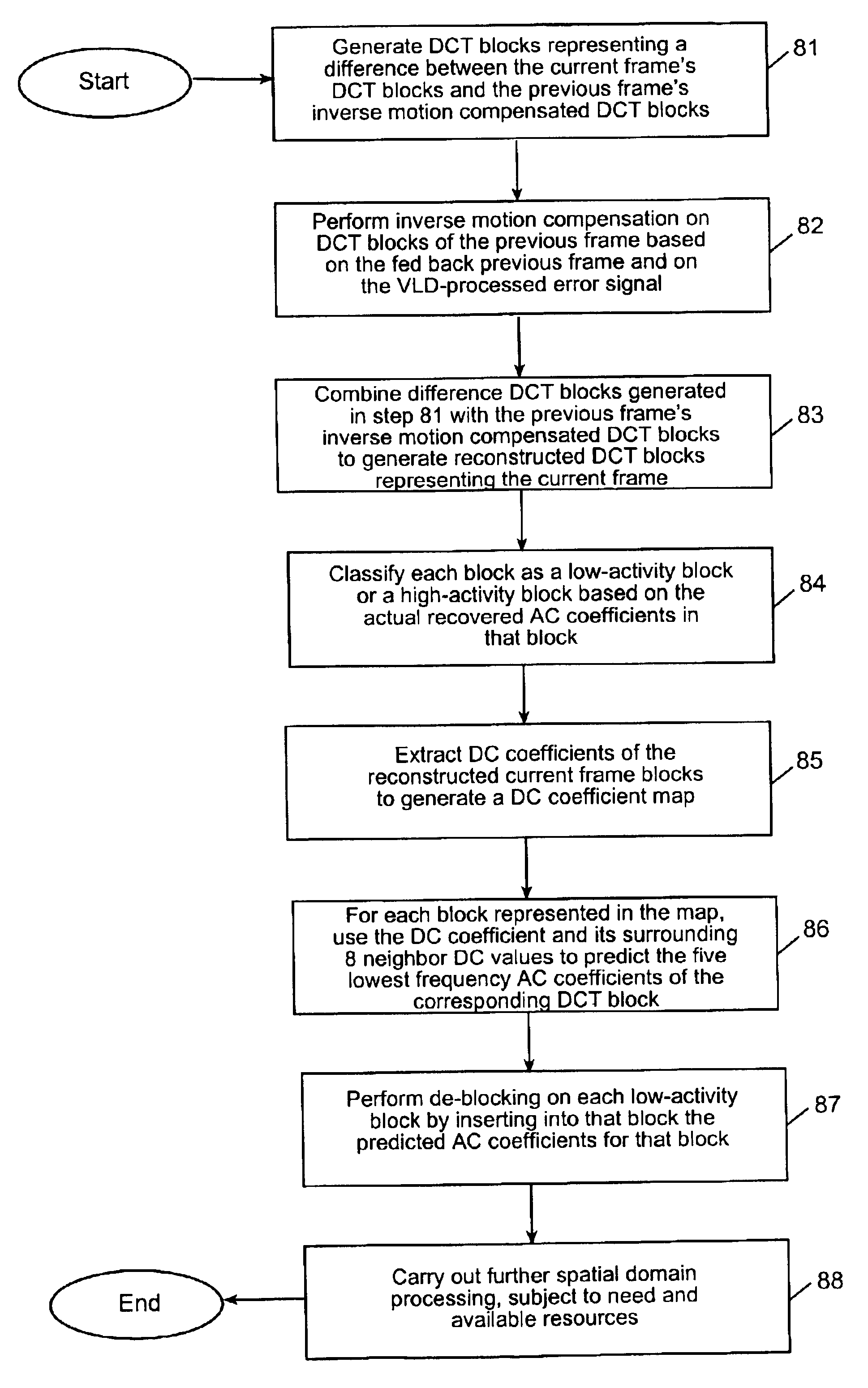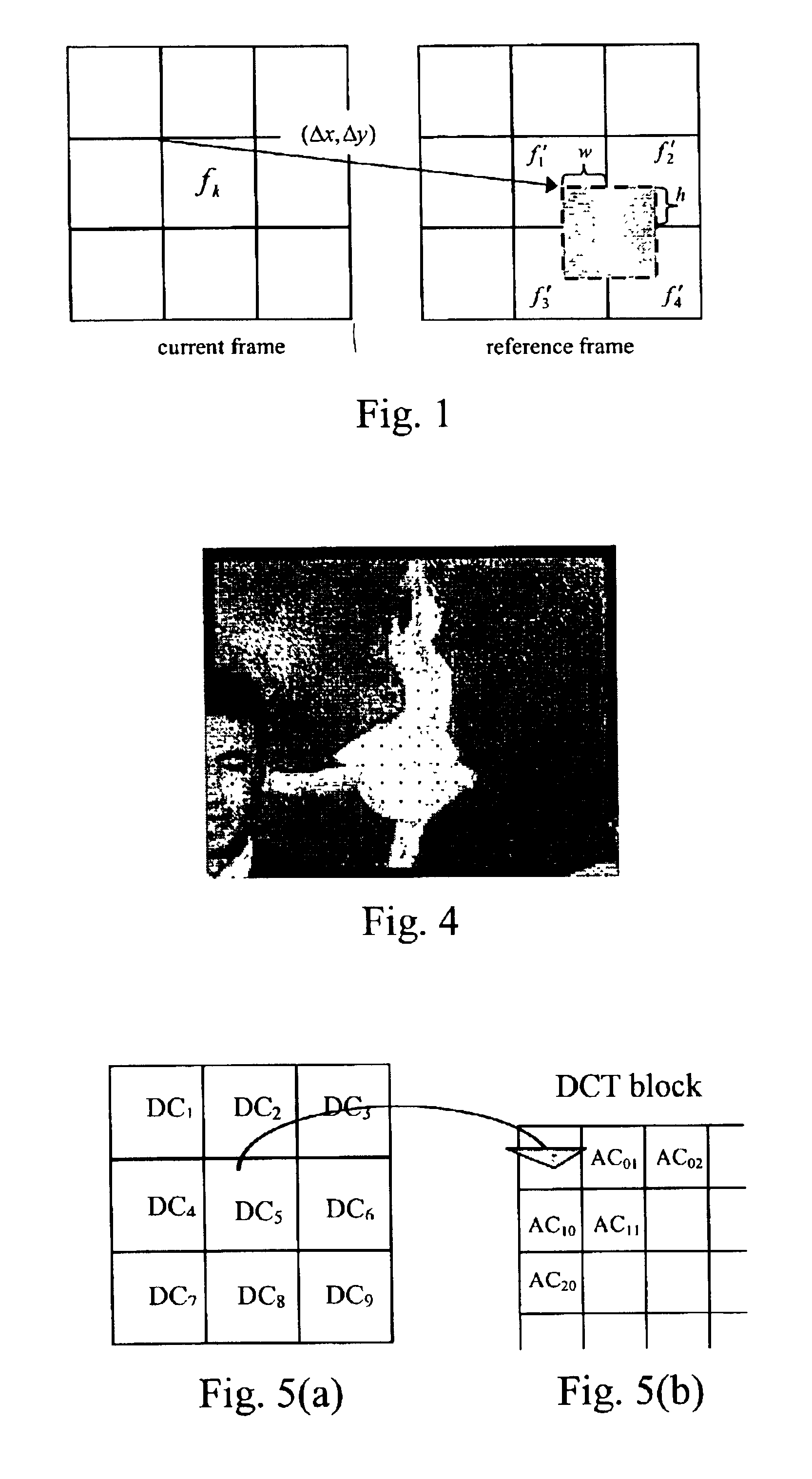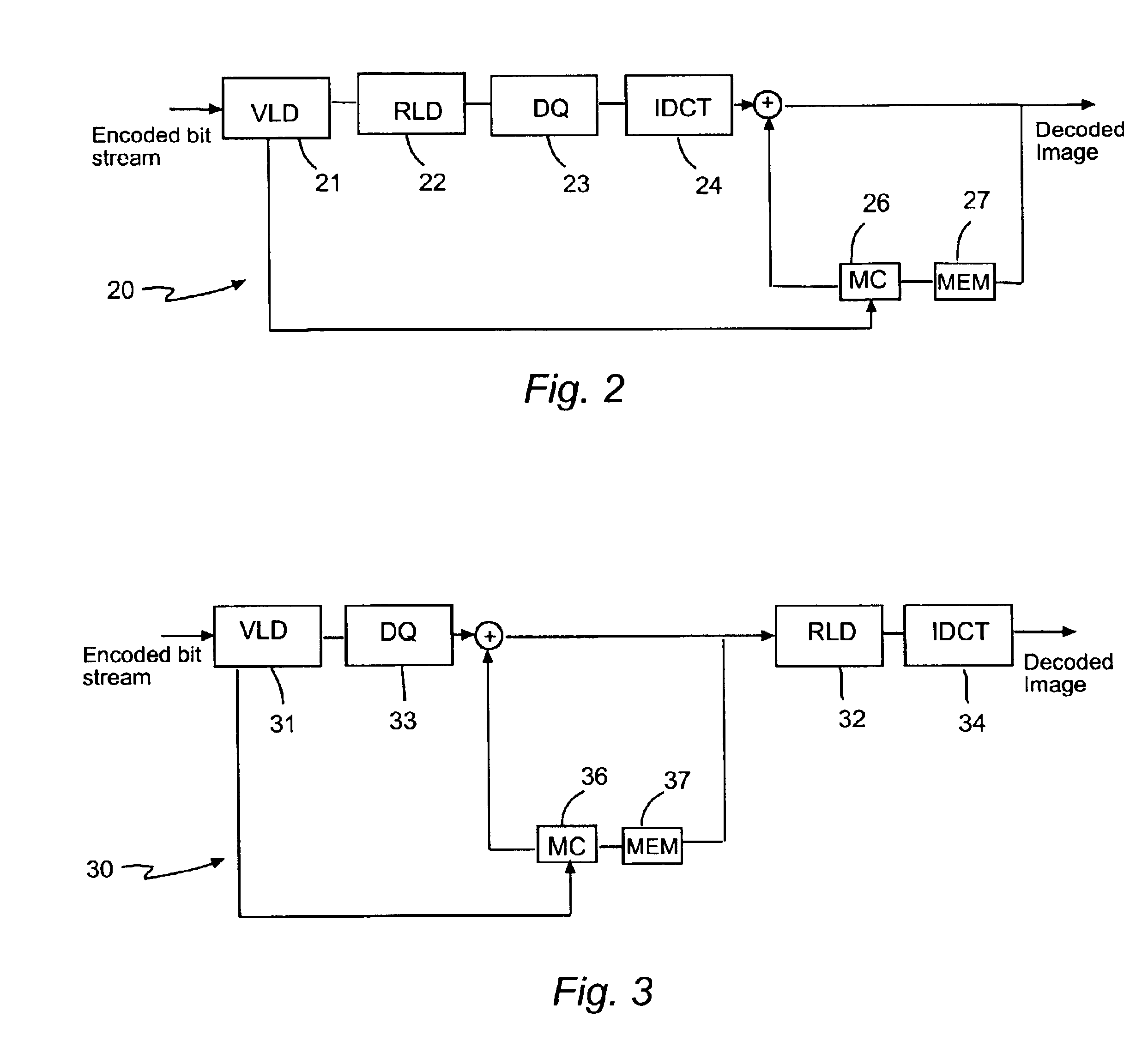Hybrid technique for reducing blocking and ringing artifacts in low-bit-rate coding
- Summary
- Abstract
- Description
- Claims
- Application Information
AI Technical Summary
Benefits of technology
Problems solved by technology
Method used
Image
Examples
Embodiment Construction
A. Overview
[0029]The present invention provides a power-scalable hybrid technique (e.g., an algorithm) to reduce blocking and ringing artifacts in low bit-rate block-based coding, and is particularly applicable to such video coding. First, simple de-blocking for low-activity blocks, where blocky artifacts are most noticeable, is performed in the compressed domain. AC coefficients in those blocks that are lost because of dequantization are replaced in accordance with the invention. This may be followed by spatial domain processing—hence the designation “hybrid”—where de-blocking of the low-activity blocks is refined and both de-blocking and de-ringing are performed on high-activity blocks. In accordance with the “power-scalable” feature of the invention, the spatial domain processing can be omitted depending on degree of improvement desired and depending on available resources such as battery or computational power. The algorithm will now be explained in detail.
B. Hybrid Scheme for D...
PUM
 Login to View More
Login to View More Abstract
Description
Claims
Application Information
 Login to View More
Login to View More - R&D
- Intellectual Property
- Life Sciences
- Materials
- Tech Scout
- Unparalleled Data Quality
- Higher Quality Content
- 60% Fewer Hallucinations
Browse by: Latest US Patents, China's latest patents, Technical Efficacy Thesaurus, Application Domain, Technology Topic, Popular Technical Reports.
© 2025 PatSnap. All rights reserved.Legal|Privacy policy|Modern Slavery Act Transparency Statement|Sitemap|About US| Contact US: help@patsnap.com



